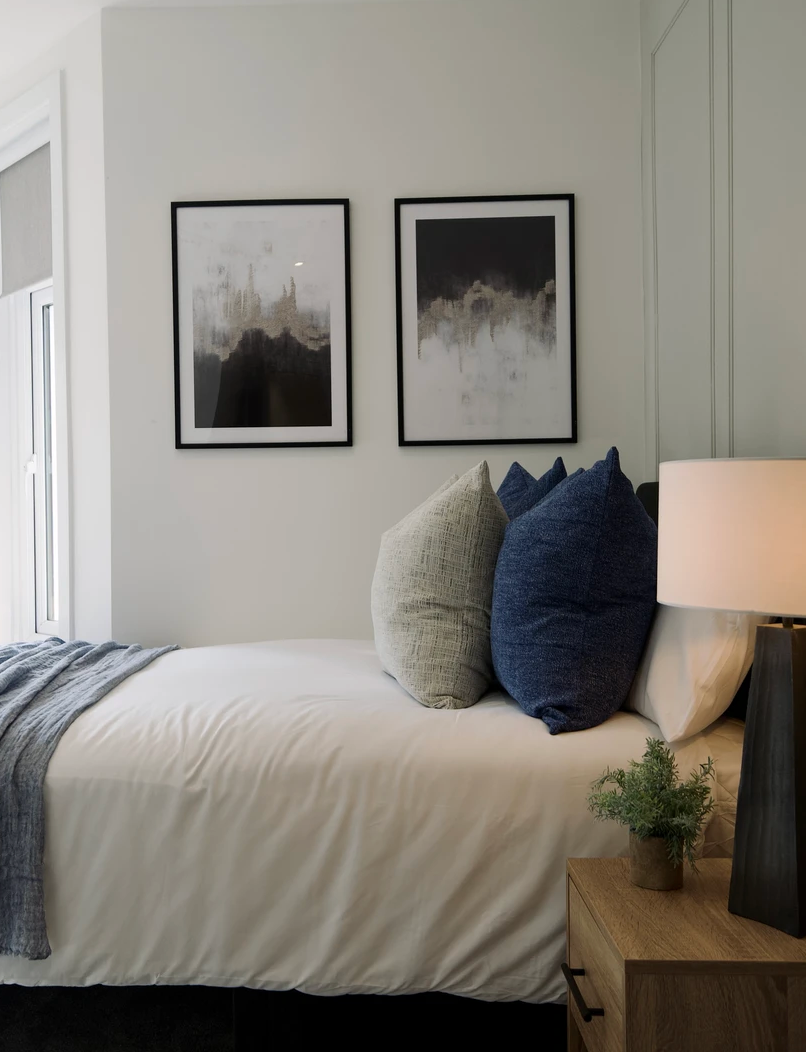Key Interior Design Elements for Successful Conversions
- kelly40892
- Feb 12
- 2 min read

Creating a successful HMO (House in Multiple Occupation) goes beyond simply dividing a property into multiple rooms. Thoughtful interior design plays a crucial role in attracting and retaining tenants, maximising rental income, and ensuring a harmonious living environment.
With the recent launch of Brentor Interior Design, we thought we'd revisit some key interior design elements to consider when converting a property into an HMO.
Functionality and Flow
Prioritise functionality and efficient use of space. Open-plan layouts can create a sense of spaciousness in communal areas, while clever storage solutions maximise room usage.
Ensure a smooth flow between different areas, with clear pathways and designated zones for cooking, dining, and relaxing.
Durable and Easy-to-Maintain Finishes
Choose durable and easy-to-clean materials for flooring, walls, and countertops.
Consider hard-wearing options like laminate flooring or tiles in high-traffic areas. Opt for paint colours that are easy to touch up and resistant to stains.
Comfortable and Private Bedrooms
Bedrooms should be designed as comfortable and private retreats for tenants.
Ensure each room has adequate space for a bed, wardrobe, desk, and chair. Consider incorporating built-in storage to maximise space.
Well-Equipped Kitchens
A well-equipped kitchen is essential in an HMO. Provide ample storage space, sufficient work surfaces, and appliances that cater to the number of tenants.
Consider installing multiple refrigerators or fridge-freezers to avoid overcrowding. Ensure there's adequate space for food preparation and cooking.
Stylish and Functional Bathrooms
Bathrooms should be designed with both style and functionality in mind. Choose durable and easy-to-clean fixtures and fittings. Consider installing powerful showers with good water pressure. Provide ample storage for toiletries and towels. Ensure adequate ventilation to prevent moisture buildup.
Lighting and Ambiance
Use a combination of natural and artificial lighting to create a bright and welcoming atmosphere.
Incorporate different types of lighting, such as task lighting, ambient lighting, and accent lighting, to create a layered and inviting ambiance.
Personal Touches and Character
Inject personality and character into the HMO with artwork, soft furnishings, and decorative accessories.
Creating high-quality accommodation in shared living spaces is crucial for both tenant retention and fostering a positive living environment.
When tenants feel comfortable, safe, and valued, they're more likely to stay longer, reducing turnover costs and ensuring consistent rental income.
Thoughtful design, quality furnishings, and well-maintained communal areas contribute to a sense of calm and well-being, promoting harmonious co-living and minimising stress.
By investing in high-quality accommodation, landlords create a win-win situation: attracting and retaining responsible tenants while maximising the long-term profitability of their investment.
Make sure you're following us @brentor_interior_design to keep up to date with everything interior design specifically for developers!
%20copy.png)



Comments